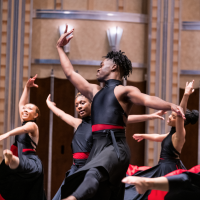My first issues of Arts Journal for the year arrived, and the two top articles in the “Ideas” section dealt with the role of jargon in the field of arts and arts grantmaking. Judith Dobrzynski (yes, she’s related to our own Marsha Dobrzynski of Young Audiences) talks about “Inventional Wisdom,” a term coined at the Massachusetts Institute of Technology to demonstrate its commitment to forward thinking as it celebrates its 150th anniversary. Ms. Dobrzynski posits that this is a term and a way of thinking that the arts would do well to use in replacing the “conventional wisdom” thinking of the past.
One key point she makes is that too often a bright new way of attracting audiences to the arts piloted by an organization (crowd-sourced exhibits, for example) is too easily copied by others expecting the same easy results. Thus, invention becomes convention and the copycats are distracted from finding their own unique inventional wisdom for attracting audiences.
And then there’s Diane Ragsdale’s blog post, which once again decries the jargon game between arts organization and funder that has for so long characterized the relationship between these two dependent entities.
Dependent, you say? How can a funder be dependent on a nonprofit arts organization? Well, if the funder cares a whit about the community, the vitality of its people, or about culture itself, it recognizes the value of the arts as a bedrock function of society. And unless it is willing to establish and operate an orchestra or dance company or theater or museum itself, the foundation needs the arts to function well in order to fulfill this part of its own mission of advancing society.
Yet we all play the game. Funders demand “innovation” and “new ideas” and “projects” that meet their passion du jour of “entrepreneurship,” “impact,” “systemic change,” etc. Clever grant writers use the magic jargon to twist core needs and programs into something that sounds like a sparkly new idea or a project that meets the funder’s needs. And the game goes on.
Don’t get me wrong. I don’t believe that funders should just hand out checks for business as usual – especially not for business as usual with the world changing and the arts needing to adapt. But I do think that funders should exercise substantial flexibility in supporting the core needs of the arts and in providing opportunities for trying those new ideas that may or may not work but that can provide learning and create the inventional wisdom needed by the arts to engage the future and assure that the foundation can keep fulfilling its own mission in society.
I think we’ve done a pretty good job of this here at the Cleveland Foundation. For more than 20 years, we have provided very flexible support for core infrastructure needs for the arts at the same time that we have crafted special programs to provide extra support for the arts and tackle critical challenges facing their sector.
In the late 1990s, our BASICs program provided millions above and beyond core support to build management capacity, technology, and strategic planning skills. Our 2004-07 Arts Advancement Program provided the risk capital needed by a group of organizations to take a leap into their futures at a critical and scary moment in time. Currently, our Sustaining Excellence initiative is helping to “stay the course” during a dramatic economic downturn at the same time we are supporting individual strategic agendas for moving ahead.
And for the past year we have been increasingly interested in the need for both the arts and the larger community to attract, engage, and retain the next generation of participants in Cleveland’s future. Our opinion piece last year in the Plain Dealer began this dialogue inside the foundation, and we are currently exploring how we can help the arts tackle this critical current challenge in the years ahead. Stay tuned.


